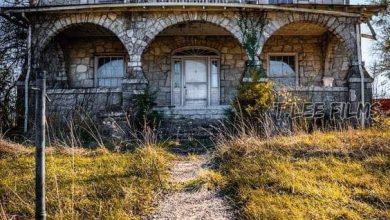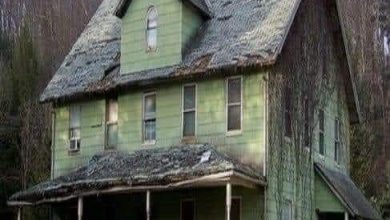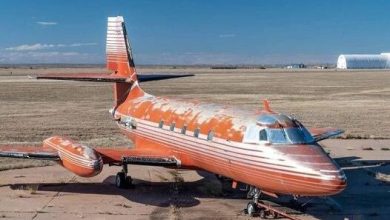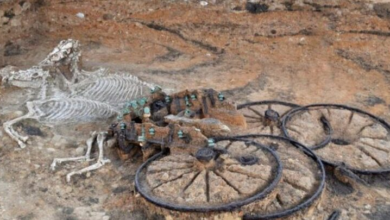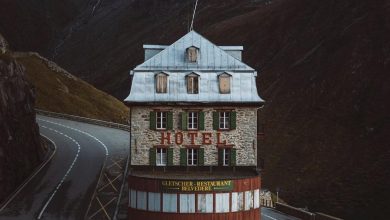Rhyolite Ghost Town: The Eerie Echoes of a Deserted Desert Oasis
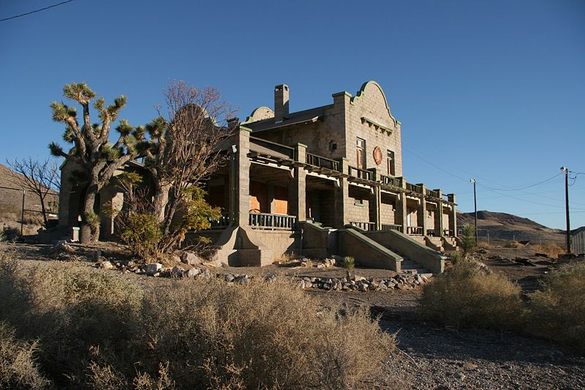
Nestled deep within the arid landscapes of the Nevada desert lies a haunting reminder of the American West’s rapid rise and fall: Rhyolite Ghost Town. This once-bustling town, which sprung to life during the early 20th century, is now a remarkable testament to the transitory nature of boomtowns and the relentless passage of time. In this article, we will explore the captivating history and eerie allure of Rhyolite Ghost Town. Rhyolite’s story begins in 1904, when a miner named Frank “Shorty” Harris and his partner Ernest “Ed” Cross discovered a rich deposit of gold-laden quartz in the nearby Bullfrog Hills. News of the discovery spread like wildfire, and prospectors and fortune-seekers descended upon the area. Within a short span of time, Rhyolite emerged as a thriving gold rush town.
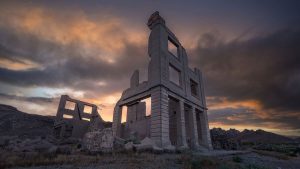
In the blink of an eye, Rhyolite’s population swelled to around 5,000 residents, making it one of the most prosperous and thriving towns in the region. The town’s main street boasted a variety of amenities, including hotels, a stock exchange, an opera house, banks, saloons, and even an electric power plant. At its peak, Rhyolite was a beacon of progress in the heart of the desert. What set Rhyolite apart from other boomtowns of its time was its architectural grandeur. The town’s most iconic building, the three-story Cook Bank Building, was constructed with imported materials such as marble, cut stone, and plate glass windows. Rhyolite also boasted a train station that connected it to the outside world, a school, a hospital, and even an ice plant that provided residents with ice for their drinks in the sweltering desert heat.
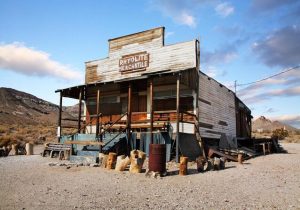
However, Rhyolite’s glory was short-lived. As quickly as it had risen, it began to fall. The mines that had spurred the town’s growth began to run dry, and a national financial panic in 1907 further exacerbated the situation. Many residents began to abandon Rhyolite, seeking their fortunes elsewhere. By 1910, the population had dwindled to just a few hundred. Today, Rhyolite stands as a haunting and eerily preserved snapshot of its past. Visitors can explore the well-preserved ruins of its once-thriving structures, including the Cook Bank Building, which remains a symbol of the town’s lost grandeur. The skeletal remains of a railroad depot, a jailhouse, and a bottle house constructed from discarded beer and soda bottles provide a glimpse into a time when the town was teeming with life. Rhyolite’s ghost town status has attracted artists, photographers, and filmmakers from around the world. Its otherworldly ambience, set against the backdrop of the desert’s harsh beauty, has made it a popular location for various creative projects. The juxtaposition of the crumbling buildings and the stark, unyielding desert landscape creates a surreal and captivating atmosphere that continues to draw those seeking inspiration and historical context.
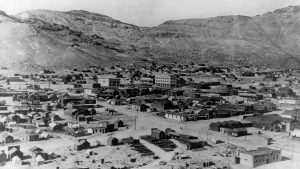
Efforts have been made to preserve the ghost town and enhance the visitor experience. Interpretive signs provide historical context, and the Rhyolite Ghost Town is managed by the Bureau of Land Management. Guided tours are available, allowing visitors to gain a deeper understanding of the town’s rise and fall and the people who once called it home. Rhyolite Ghost Town stands as a poignant reminder of the transient nature of prosperity in the American West during the early 20th century. Its haunting beauty and historical significance make it a must-visit destination for those intrigued by the stories of boomtowns and the relentless march of time. As you wander the streets of Rhyolite, you can’t help but wonder about the dreams and ambitions of those who built this desert oasis, and the eerie echoes of their past that linger in the Nevada desert.
